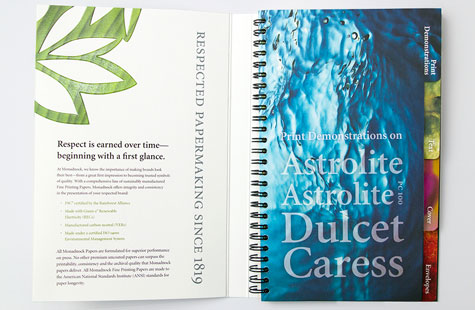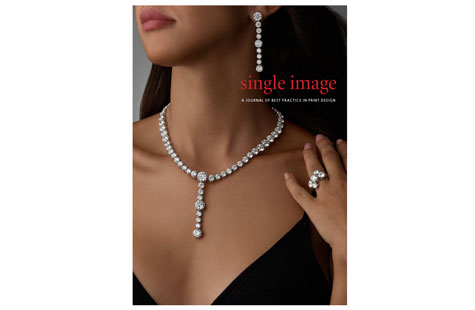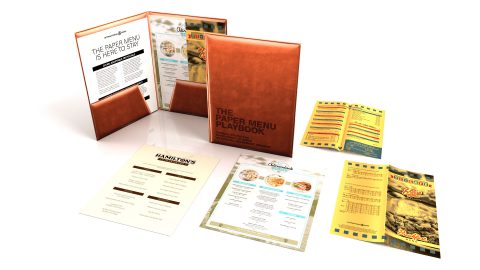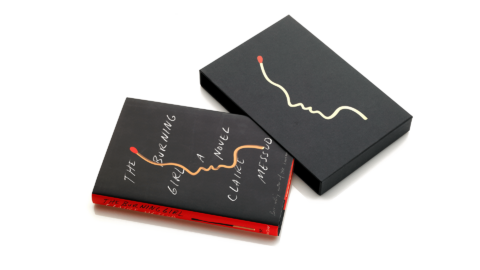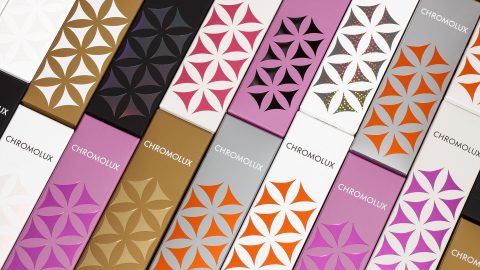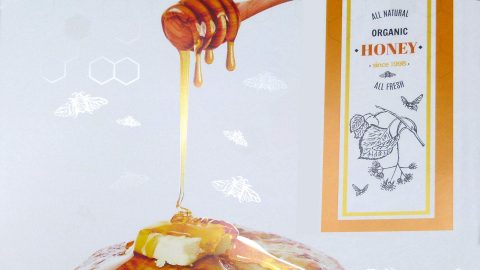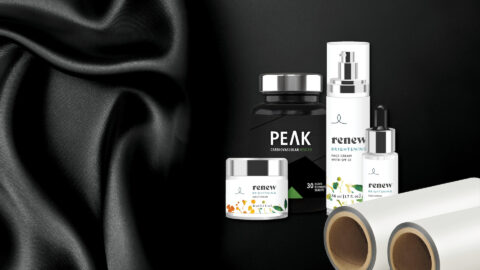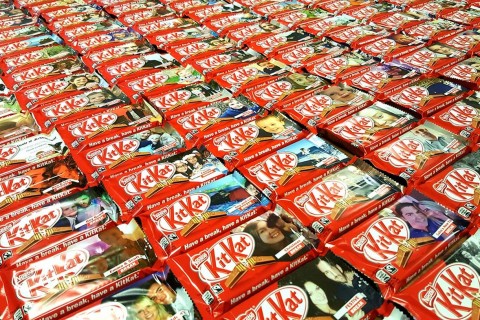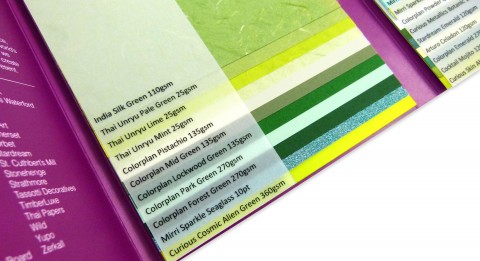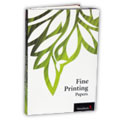
Spring is in the air and Monadnock is making sure you come out of the winter blahs swinging with two new tools designed to make your projects brighter, bolder, better: The hot-off-the-presses swatchbook “Fine Printing Papers” and Single Image, a design journal exploring best practices in print design.
‘Fine Printing Papers’
This is a comprehensive sample book that includes full-size swatches, making the paper specification process easy and inspirational for brands, designers and printers. In it you will find beautiful print demonstrations on Monadnock’s FSC-certified grades: Astrolite, Astrolite PC 100, Dulcet and Caress.
- Astrolite is a brilliant white uncoated paper with superior formation and surface uniformity for excellent printability. With a smooth, toothy vellum, and a luxuriously tactile ultra-smooth silk finish, its exceptional opacity and formation minimize show-through and increase dimensional stability to assure consistent registration and on-press performance.
- Astrolite PC 100 is one of the cleanest, brightest and smoothest 100% recycled printing papers made. FSC certification assures that nothing but post-consumer recycled fiber was used to make this paper.
- Dulcet is an elegant neutral white premium paper that is color-balanced for highly accurate color reproduction – particularly in flesh tones. Dulcet was designed for excellent printability and meets ANSI standards for longevity.
- Caress is a sophisticated mellow white paper with an exquisite surface and superior formation. The muted tone of Caress adds richness and warmth to colors, accentuates sepia tones, and lends a humanizing effect to portraiture.
Request your copy of the brand new “Fine Printing Papers” swatchbook from Monadnock Paper Mills right now!
Single Image
In addition to the new sample book, Monadnock is launching Single Image, a design journal that is part of a comprehensive new campaign – Design+Print=Impact – to raise awareness for the unique power of high end printed communications; it will share case studies and best practices for brands, designers and marketers. The following is excerpted from the premiere issue:
As a lover of fine paper, you may already be well versed in print production. For those who are starting out, or aspire to bring their work to a higher level, it’s important to approach print design as a discipline that requires preparation, focus and an adequate investment in time and resources.
Like anything that is valuable, fine printing isn’t easy and it isn’t cheap. The resulting exceptional engagement and enduring appeal delivered by a well-printed piece pays huge dividends in marketing impact. Wise businesses are recognizing the enormous potential of print in a world overpopulated by fleeting messages delivered online. For those who are interested in tapping this potential, here are a few fundamental tenets to consider.
Rely on a strong team of partners. Fine printing will result from the collaboration of experienced professionals. Work hard at finding the very best printer, photographer and paper merchant you can and trust them to do their jobs. Once you have a team that works well together and capitalizes on each other’s strengths, you will be able to streamline your workflow, become more efficient and raise the bar for quality. Recognize that switching between suppliers for the sake of price carries the added cost of learning how to work together and re-establishing expectations.
Start with exceptional images. Great printers often work miracles on mediocre photographs, but truly special projects almost always start with photographs that are beautiful, well-constructed and of sufficient resolution for the offset printing process. Each step in that process, from file to plate to blanket to paper, causes some loss in fidelity, albeit slight. Start with images that have enough dynamic range to reproduce well with snap and intensity. This requires a trained eye, so don’t hesitate to rely on your printer for their evaluation.
Manage color carefully. It’s important to establish clear expectations about the appearance of an image. Color management systems are invaluable for alignment between the printer, designer and client, but the printer’s proof is the single indicator of how an image will print. The best printers calibrate their proofing systems to the press and the paper stock so they can accurately represent the finished product.
Understand the impact of paper quality. Paper is more than just a surface that carries ink, and print fidelity isn’t just a function of the smoothness of a paper. The quality and formation of the fibers and fillers within the sheet must create a uniform and level foundation so that halftone dots print completely and the ink film is absorbed uniformly. Achieving this degree of quality requires the finest pulps and ingredients made on a paper machine that is specifically engineered for the purpose.
Maximize resources for sustainability. Through intelligent planning, you can maximize resources and leverage your budget at the same time. Design page formats that make full use of the press dimensions and consider additional items like cards and bookmarks that can fill unused areas. Ask your printer to suggest different page sizes that work well on their presses and through their bindery. Also select paper stocks from responsibly managed forests with FSC certification.
Consider print an investment, not an expense. Print communication has never been more important for influencing audiences that are educated, discriminating and committed to sustainability. It requires a targeted strategy, but no other media provides the same degree of engagement and retention. Through analytics and integrated campaign strategies, innovative companies and nonprofits are identifying high-value prospects and leveraging the power of print to connect with them to a degree that online communications cannot match.
Request a copy of the first issue of Single Image today: go to DesignPrintImpact.org!
Astrolite, Astrolite PC 100, Dulcet and Caress are all registered trademarks of Monadnock Paper Mills.

